'We didn't want it to feel like a political event': Nunavut's devolution ceremony was a celebration
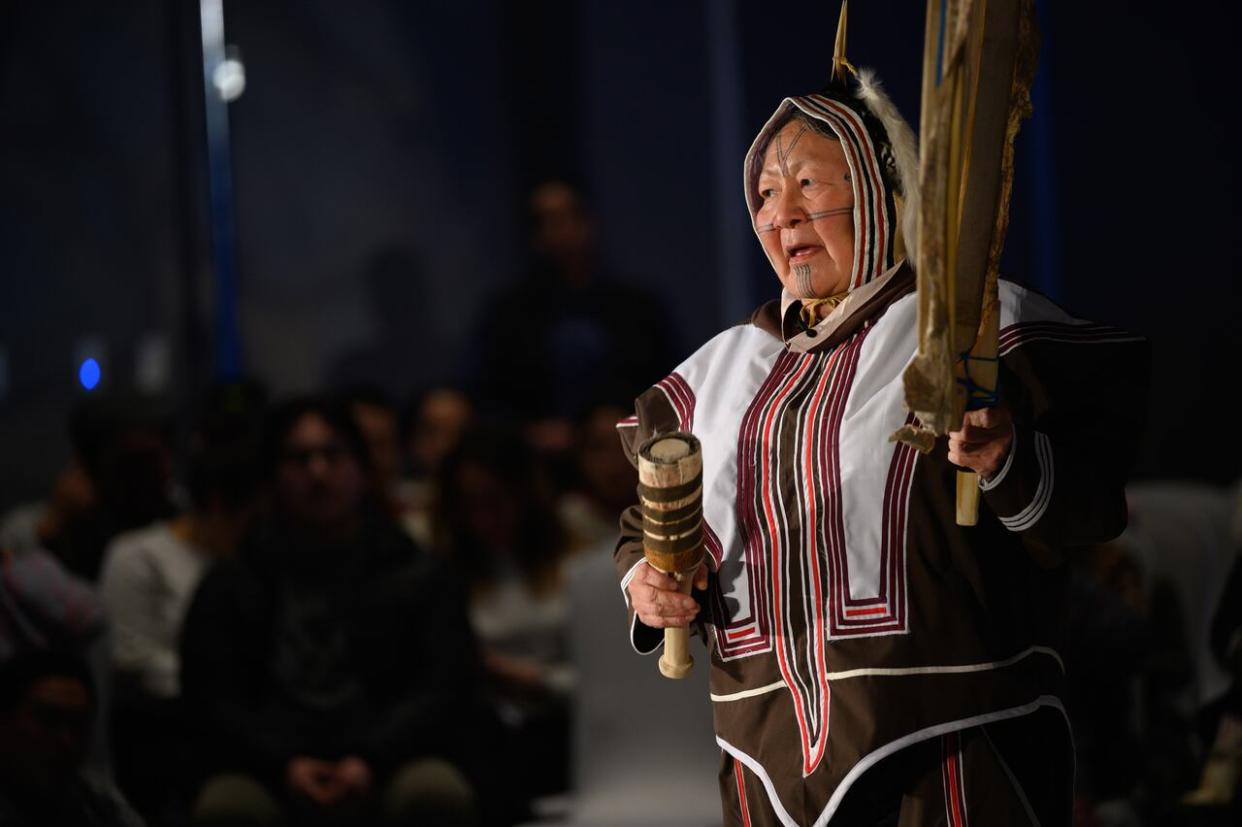
- Oops!Something went wrong.Please try again later.
Last week's devolution ceremony in Iqaluit was more than just a signing ceremony — it was a showcase of Inuit talent and tradition from across the territory.
That was the vision for Sylvia Cloutier, the artist who curated the ceremony. For her, it was also a celebration of all things Nunavut.
"We've come such a long way," Cloutier said. "We didn't want it to feel like a political event. We wanted it to feel like a gathering."
Prime Minister Justin Trudeau, Premier P.J. Akeeagok and Nunavut Tunngavik Inc. president Aluki Kotierk signed the agreement at a ceremony in Iqaluit on Thursday last week, nearly 25 years after Nunavut became a territory.
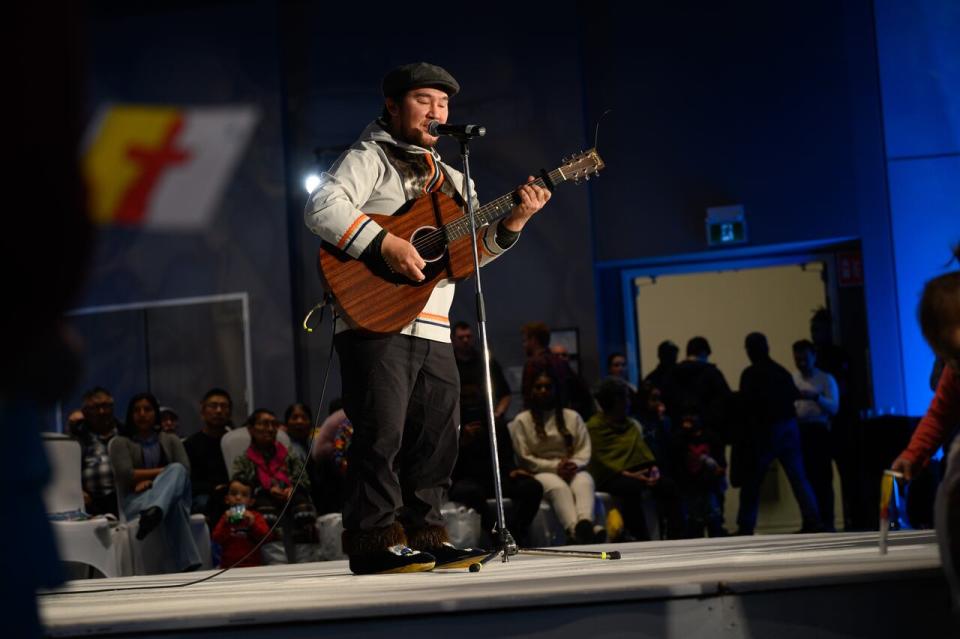
Terry Uyarak, an Inuk singer and songwriter from Igloolik, Nunavut, performed at a public event following the signing of the Nunavut devolution agreement. Organizers said they wanted to celebrate young people at the event because the agreement will shape the future of the territory and how decisions are made. (The Canadian Press)
It's the largest land transfer in Canada's history, covering two million square kilometers of land and water.
The ceremony opened with music and performances from Nunavut artists young and old, from Artcirq circus performers from Igloolik to traditional drum dancers from Cambridge Bay.
"They were like love songs for Nunavut," Cloutier said.
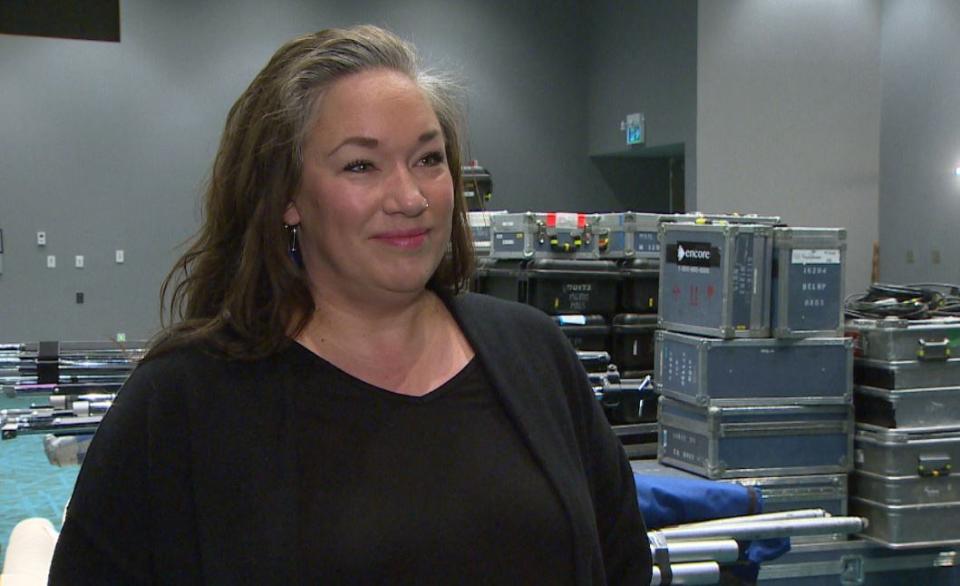
Inuk artist Sylvia Cloutier designed and curated Nunavut's devolution ceremony. (Carl Cardinal/CBC )
It ended with people, including the premier and Prime Minister, jigging to the music of Daniel Kolola, Calvin Pameolik and Gustin Adjun.
"That was the idea, to create not just a happy vibe, but a sincere genuine feeling for the event. And that was to celebrate our resilience and celebrate our strength," Cloutier said.
Sealskin chairs atop a sea ice-inspired stage
Nicole Camphaug, an artist from Rankin Inlet, designed and sewed the sealskin-upholstered chairs the signatories sat in while signing the agreement.
It took about three or four hours per chair, she said.
"It was quite the process," she said. "I knew people would appreciate the art, the time, everything that went into this special day."
"I'm very glad that our Inuit culture was showcased on such an important day," she added.
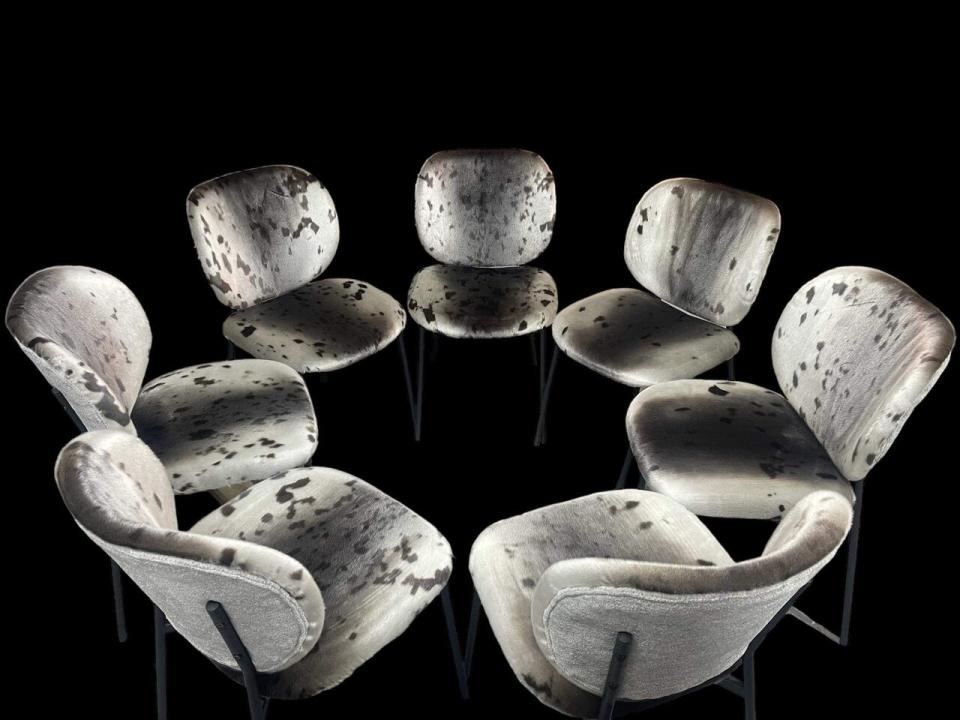
Nicole Camphaug, an Inuk designer, spent hours upholstering a set of chairs with sealskin for the devolution signing ceremony in Iqaluit. (Submitted by Sylvia Cloutier )
Camphaug also said she hopes the fact that every artist involved in the ceremony was Inuk will show people that art can be commissioned and produced by people in Nunavut instead of elsewhere.
"I was able to produce those chairs here," she said. "I think that's something everybody should know, that we make good quality items right here in Nunavut."
Cloutier said she designed the room to be circular, with everyone on the same level, to represent working together.
That meant creating a circular stage, with the audience sitting around it.
"I really wanted to create a space where Inuit felt at home," Cloutier said. "We've always lived in circular spaces."
It also meant putting the stage very close to the ground, so that everyone was on the same level.
"I didn't want things to happen on a stage where people observed; I wanted everyone to be a part of it," Cloutier said.
Samuel Kuluguqtuq, a young carpenter who works with NCC Development, built the stage, the podium and the table where the dignitaries sat to sign the agreement.
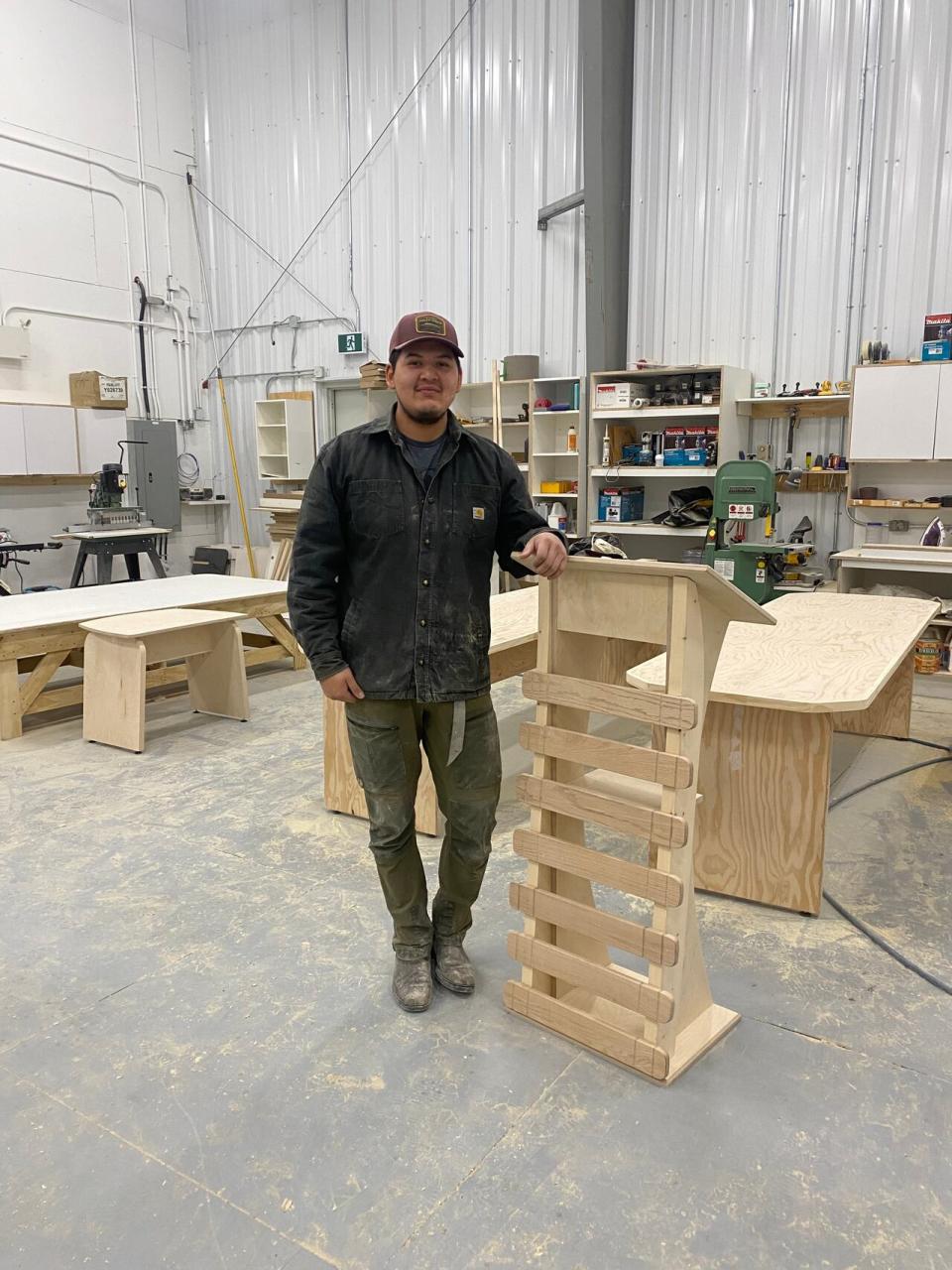
Samuel Kuluguqtuq, a carpenter in Iqaluit, built everything for the devolution ceremony just one week before. (Submitted by Sylvia Cloutier )
The table was made in the shape of a 'V," to represent geese flying in the sky, while the podium was made in the shape of a qamutik.
Kuluguqtuq said he started crafting the items just one week before the event.
"When you have the time and space to make this stuff, it makes things go a lot faster," he said.
Kuluguqtuq made Cloutier's vision come to life.
"I was really honoured," he said. "To have it Inuit-made, it made it that much more special."
For Cloutier, it was also important to showcase what has almost been lost.
"Some of these performers have worked so hard to preserve our traditional songs," she said.
Young people across the territory are reviving traditional activities like sewing, running dog teams and building tools, Cloutier said.
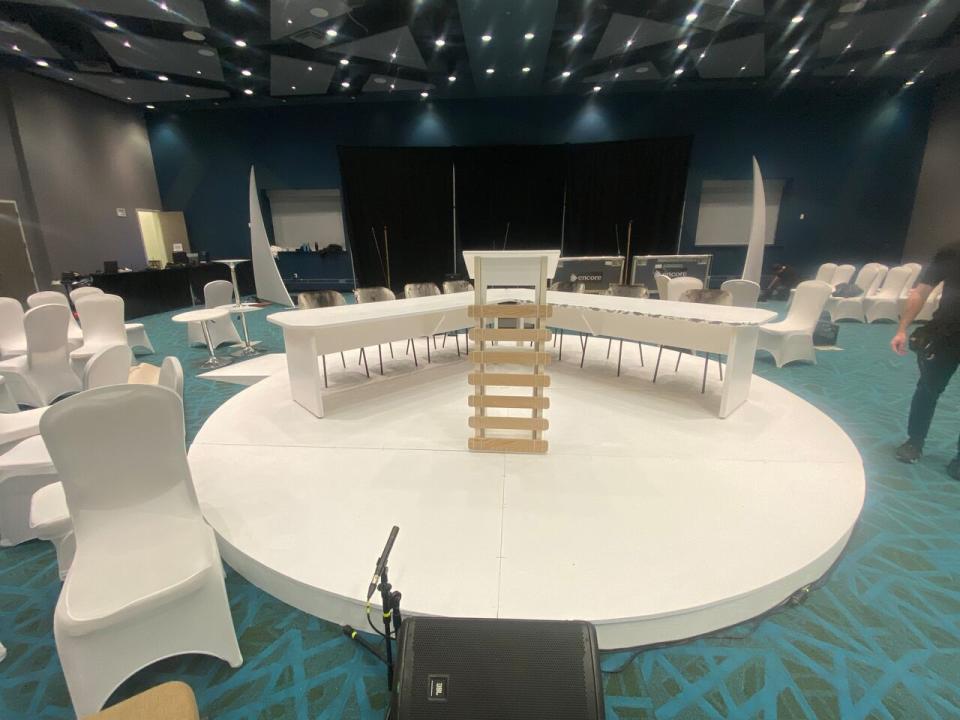
The table, podium and circular stage designed by Sylvia Cloutier and built by Samuel Kuluguqtuq for Nunavut's devolution ceremony. (Submitted by Sylvia Cloutier )
"We told them, 'This is for you. This is your event,'" she said. "We don't hear enough about how well young people are doing," Cloutier said.
She also wanted youth to be engaged in the event because the agreement will ultimately shape the future of the territory and how decisions are made.
"Everyone behind them on stage did the work to get here. But now it's their time, it's their future," Cloutier said.

